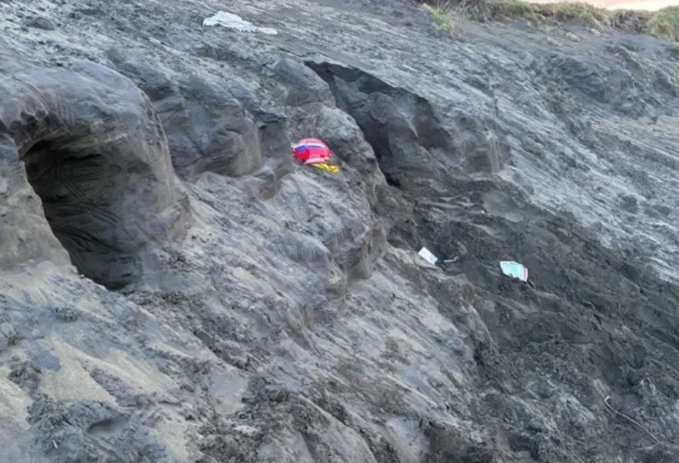
The Auckland Rescue Helicopter Trust said the man was digging a hole in a sand dune when it collapsed on him at Muriwai beach on Saturday evening.
The helicopter rescue crew was called to the beach on Auckland's west coast about 5pm to help Kane Hanna Watson, 28, after he was buried headfirst in the dune.
Watson was flown to Auckland City Hospital in a critical condition but died.
He was at the beach with his family and was expecting another baby early next year, the NZ Herald reported.
Watson has been described as a devoted father. His loved ones say they have been left shocked and shattered after his sudden death while playing with his children.
A Givealittle set up to support the family has raised almost $6000.
The fatal incident comes after a boy was killed in 2023 after he and a friend became trapped in a collapsed dune on Aotea Great Barrier Island.
The boys, aged 12 and 14, had been digging tunnels in the dunes during a family picnic at Medlands Beach.
They were both flown to Starship Hospital in a critical condition. The 12-year-old was taken off life support days later.
University of Auckland senior lecturer in civil engineering hydraulics, Dr Colin Whittaker, wants to see more public education about the dangers of sand dunes.
"As we come into summer, there will hopefully be public awareness campaigns about the risks of drowning to try to save more lives and keep people safe on the beach or in the river.
"I'd like some messaging about sand dunes - or just sand in general - not being particularly stable, tacked onto the back of that.
"It may not affect as many people, but if anyone can avoid that happening to them so much better."
It was crucial to realise just because the sand was still it did not mean it was stable, Whittaker said.
There were multiple reasons dunes could become unstable, including getting cut by waves, vehicles driving over them, people walking on them or digging into them.

"If you've got a big dune above you and a lot of that collapses, you've potentially got something that weighs as much as an elephant collapsing on top of you - that's obviously very damaging but also pretty hard to dig yourself out of, especially if you're struggling for air."
Rescuing someone trapped in sand could be extremely difficult.
"As soon as you start trying to dig someone out, as you dig a hole, the sand fills it back in. It's incredibly challenging to do."
Sand weighs more than two and a half times as much as water, Whittaker said.
It was not just burrowing into dunes that could lead to potentially fatal outcomes - digging holes on the beach big enough to stand in ran the same risk.
"If you dig a deep enough hole and you've got near vertical side walls and you're inside that hole, the whole thing can collapse on you. Is it more or less dangerous than a dune? You're probably in equal amounts of trouble if all of that falls on you."
He advised being aware of one's surroundings and the potential risks.
"If you're looking at water, you want to think how deep is it, how fast is the current moving? For a dune, or if you're in a hole you're digging, it's probably how much sand is above me? And if it fell, how much could potentially fall on me?"
Even small changes in sea level rise caused by climate change could exacerbate the issue, with larger waves scoring out more of the dune than they might otherwise, and smaller waves that previously may not have reached the toe of the dunes now contributing to the erosion.
-RNZ and Allied Media













